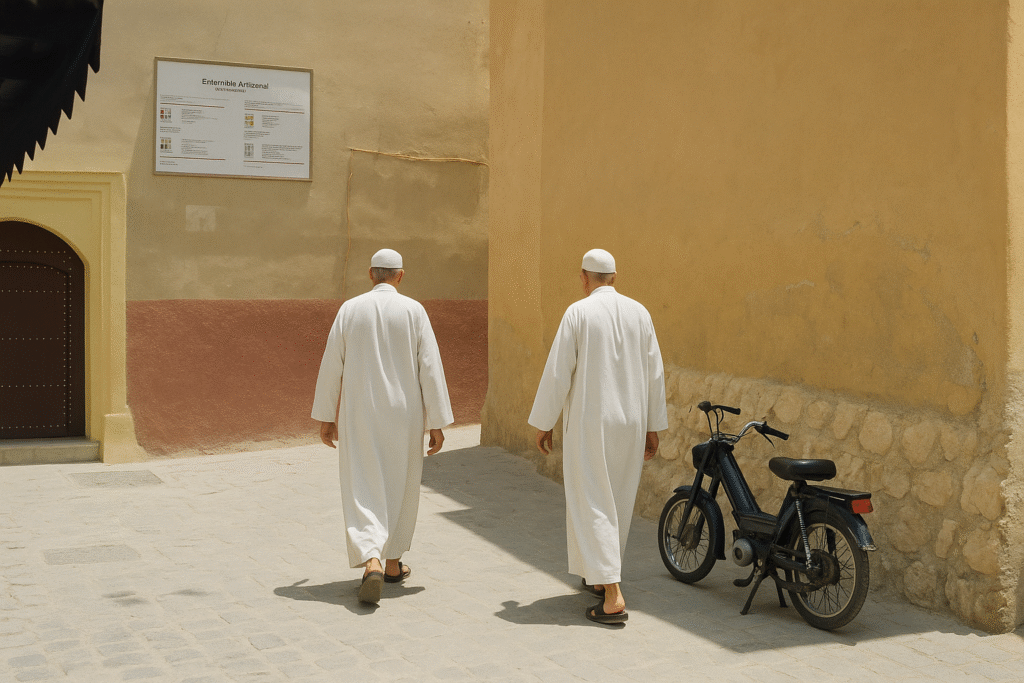
How to Dress in Morocco: Essential Travel Tips for Respectful & Stylish Outfits
Visiting Morocco is an exciting adventure. It’s filled with rich culture and lively cities. But, it’s important to know the local customs, especially how to dress.
Morocco values modesty a lot. Dressing right shows respect for the culture and makes your trip better. This guide will help you understand how to dress in Morocco.
By using these Morocco travel tips, you can enjoy the souks, landscapes, and hospitality. Remember, your clothes matter when you’re in the medinas or a riad. It’s all about being respectful and enjoying your time.
Understanding Moroccan Dress Culture
Morocco’s unique culture shines through its traditional clothes. These clothes have been shaped by different ethnic groups and history. The country’s location at the crossroads of Africa, Europe, and the Arab world adds to its rich clothing traditions.
At the heart of Moroccan attire are Djellabas and Kaftans. Djellabas are long, hooded robes for everyday and special occasions. They show Morocco’s conservative values and Islamic heritage. Kaftans are more elaborate, worn on big events like weddings and religious celebrations. These clothes are not just beautiful but also carry deep cultural meaning.
Djellabas and Kaftans
Djellabas and Kaftans are key to Moroccan dress culture. They symbolize modesty, elegance, and cultural identity. The designs and embroidery on these clothes vary by region, showing local tastes and traditions.
Berber Influences
The Berber culture deeply influences Moroccan clothing. The Berbers, or Amazigh, are Morocco’s indigenous people. Their textile traditions have greatly enriched the country’s dress culture. Berber influences add vibrant colors, patterns, and motifs to Moroccan clothing and textiles.
Understanding Moroccan dress culture helps appreciate the country’s heritage. It also guides visitors on how to dress respectfully during their stay. By embracing traditional Moroccan clothing, visitors can have a more meaningful and respectful experience with the local culture.
How to Dress in Morocco as a Female Visitor
When you travel to Morocco, you might wonder how to dress right. Morocco is known for its vibrant culture and rich heritage. It’s important to dress modestly to respect the local customs.
Moroccan culture values modesty. As a visitor, it’s key to dress with respect. Modest dressing means you can still look stylish without being too revealing.
Loose-Fitting Tops and Tunics
Wearing loose-fitting tops and tunics is a good start. These clothes are comfy and cover the body well. Choose tops that aren’t too tight and tunics to layer over pants or leggings.
Pants, Skirts, and Dresses
Pants are a good choice for bottoms. They’re comfy and cover well. Skirts like midi or maxi are also stylish and modest. For dresses, pick ones that are not too tight or short. A flowy maxi dress is perfect for Morocco’s warm weather.
Scarves and Shawls
Scarves and shawls are great for adding style while staying modest. They can cover your shoulders or head in mosques or conservative areas. Choose lightweight ones that are easy to pack.
In short, dressing in Morocco as a female visitor is about finding a balance. Choose loose-fitting clothing, respect local customs, and use scarves and shawls. This way, you’ll have a respectful and fun trip.
Men’s Clothing Guide for Morocco
Dressing for Morocco as a man is more than just picking clothes. It’s about knowing the cultural rules and dressing modestly. This shows respect for local customs.
Shirts and Tops
Choosing shirts and tops for Morocco is important. Go for modest, breathable fabrics like cotton or linen. Stay away from sleeveless tops or anything too tight.
A lightweight, long-sleeved shirt is both stylish and comfy. Morocco’s weather changes a lot, so it’s good to have something versatile.
Think about packing a few versatile tops. This way, you can change outfits for different places. From casual outings to formal events, you’ll be ready.
Pants and Shorts
When picking pants and shorts, think about comfort and modesty. Shorts are okay in tourist spots, but longer pants are better in rural areas or mosques. Linen pants are perfect for hot days.
For formal events or cooler nights, bring smart trousers. They can be dressed up or down. They fit many situations well.
Footwear Options
Footwear in Morocco should be practical and comfortable. For walking around cities, good shoes or sneakers are a must. Sandals are fine in relaxed places.
For formal or traditional places, pack dress shoes. Remember, taking off your shoes before entering a mosque or home shows respect. Choose shoes that are easy to remove.
Dressing for Different Moroccan Regions
When you travel in Morocco, knowing the regional dress variations is key. Each area has its own culture and weather, so it’s important to dress right. This way, you can respect the local customs and enjoy your trip.
In the conservative south, you should dress more traditionally. Cover your shoulders and knees as a sign of respect. Wear light, loose clothes that cover your body because it’s very hot.
The urban north, like Tangier and Casablanca, has a more relaxed dress code. But, still dress modestly, especially when visiting mosques or rural spots.
The mountainous areas, like the Atlas Mountains, need different clothes because it’s cooler. Wear layers for the cold mornings and evenings. Also, bring waterproof clothes when it rains.
Cultural adaptation is crucial for a great Morocco travel experience. Knowing and following local dress rules helps you connect with the culture. It makes your trip more meaningful and fun.
Wearing traditional clothes in rural areas or at local events shows respect. But, also think about your comfort and what’s practical to wear.
To sum up, dressing right for Morocco’s regions is about respecting local customs and adapting to the weather. By doing this, you’ll have a respectful and fun trip through this diverse and lively country.
Seasonal Dress Guide for Morocco
Morocco’s weather changes a lot with the seasons. It’s key to pack right. You’ll face really hot summers and cooler winters.
In the summer (June to August), it gets very hot, especially in the desert. Wear lightweight, breathable clothes to stay cool.
Heat-Appropriate Fabrics
Choose clothes made from natural fibers like cotton, linen, or silk. They breathe well and keep you cool. Stay away from synthetic fabrics that can make you hot.
Sun Protection Essentials
It’s important to protect yourself from Morocco’s strong sun. Use sunscreen with high SPF, wear a hat, and sunglasses. Clothes with UPF protection are also good.
In the winter months (December to February), it can get cold, especially in the mornings and evenings. Bring layers, like a warm coat or jacket, to stay warm.
The spring (March to May) and autumn (September to November) are mild. It’s a great time to visit. Wear layers that you can adjust as the day goes on.
Dressing for the season makes your trip to Morocco more comfortable and fun. Whether you’re in the cities or the desert, being ready for the weather makes your visit better.
Special Situations and Dress Codes
When you visit Morocco, knowing the dress codes for special situations is key. This helps you avoid causing offense and enjoy the local culture fully. Morocco is proud of its rich cultural heritage and traditions.
Visiting mosques or religious sites means you need to follow strict dress codes. You should cover your shoulders and knees as a sign of respect. Women should also wear a scarf to cover their hair.
At cultural events or festivals, dress codes are important too. Morocco’s festivals, like the Marrakech International Film Festival, are lively. Even though the dress code is relaxed, dressing modestly is still important
For special occasions like weddings or holidays, dress codes are more formal. If you’re invited, wear formal and modest clothes. Men might wear a suit, and women should choose a dress that covers their shoulders and knees.
Respecting these dress codes shows you value the local culture. It also makes your visit to Morocco more meaningful. By dressing right, you can fully enjoy and appreciate the culture.
In summary, Morocco’s culture shines through its special occasions and events. Knowing and following the dress codes shows respect. It makes your trip even better.
Shopping for Clothes in Morocco
Shopping for clothes in Morocco is an exciting adventure. You’ll find colorful markets and a mix of traditional and modern clothes. From detailed traditional outfits to the latest fashion, there’s something for everyone.
When you’re in Moroccan souks, get ready to bargain. Bargaining is a big part of the culture. Start with a lower price than you want to pay, and be ready to meet in the middle.
Bargaining Tips
To bargain well, know the market value of what you want. This helps you negotiate better. Being friendly and respectful can also help you get a good deal.
Also, be ready to leave if the price isn’t good. This might make the seller offer a better deal.
Quality Assessment
Check for signs of craftsmanship like detailed stitching and quality materials. Traditional clothes like kaftans and djellabas are known for their quality.
For modern clothes, look at the fabric and how it’s made. Ask the seller about the material and how it was made.
Being informed and ready can make your shopping in Morocco great. You’ll find clothes that fit your style and budget.
Packing Checklist for Your Morocco Trip
Having a good packing list is key to a stress-free trip to Morocco. Morocco’s weather and culture need careful planning. This ensures a comfortable and fun trip.
Clothing Essentials
Morocco’s culture is conservative, so you’ll need to dress modestly. Pack lightweight, breathable clothes that cover your shoulders and knees. For women, scarves and shawls are great for adding style and modesty.
Men should bring long-sleeved shirts and trousers for temple visits or rural areas. Think about the season: light clothes for summer and layers for winter, especially in the mountains. Quick-drying fabrics are a good choice, as it sometimes rains.
Accessories and Footwear
Comfortable shoes are essential for all the walking you’ll do. Include sturdy shoes or sandals with a good grip. Accessories like hats, sunglasses, and sunscreen are important for sun protection in summer.
For women, a few stylish outfits can be made better with scarves, jewelry, and a good handbag. Men might want to pack a belt, a watch, and a simple wallet. Morocco is famous for its leather goods, so you might want to buy some local accessories.
By focusing on these essentials, you’ll be ready for Morocco’s culture, weather, and social scenes.
Embracing Moroccan Style While Honoring Local Traditions
When you’re getting ready for your trip to Morocco, remember to mix your style with respect for the culture. Moroccan style is a mix of old and new, making your travel fashion even better.
Being aware of local customs and dress codes shows respect for Morocco’s culture and people. This makes a good impression and helps in building positive relationships between cultures.
Adding Moroccan style to your outfits is a great way to connect with the local culture. You can use bright colors, patterns, and even traditional clothes like djellabas and kaftans. This way, you can enjoy Moroccan fashion while respecting local traditions.
As you wander through Morocco, whether in Marrakech or rural areas, your careful choice of clothes will be valued. By mixing your style with cultural awareness, you’ll have a more real and fun travel experience.

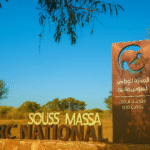

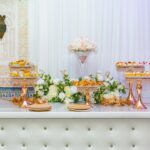
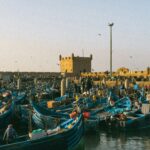
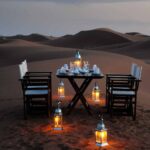
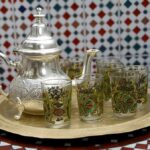

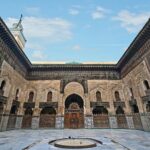
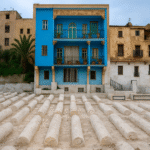
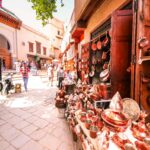
Visiting Morocco offers a unique experience with its vibrant culture and rich traditions. Dressing modestly is essential to respect the local customs and enhance your travel experience. Traditional clothing like Djellabas and Kaftans reflects the country’s cultural identity and elegance. Understanding these traditions can help visitors have a more meaningful and respectful journey. How can travelers balance modern fashion with Moroccan modesty expectations? Given the growing economic instability due to the events in the Middle East, many businesses are looking for guaranteed fast and secure payment solutions. Recently, I came across LiberSave (LS) — they promise instant bank transfers with no chargebacks or card verification. It says integration takes 5 minutes and is already being tested in Israel and the UAE. Has anyone actually checked how this works in crisis conditions?
The text is in English, so here’s a comment in English:
Morocco’s dress culture is truly fascinating and reflects its diverse heritage. The emphasis on modesty shows how respect and tradition are deeply valued. Learning about traditional clothing like djellabas and kaftans adds depth to any visit. The Berber influences bring such vibrant colors and patterns to the textiles. How can travelers balance modern fashion with local dress customs while staying respectful? Recently, I came across a program for GPT-generated text (генерация текста) in Russian. The cool part is that it runs locally on your own computer, and the output is actually unique and quite decent. By the way, I hope the content on your site isn’t AI-generated?
Visiting Morocco offers a unique insight into a culture rich with history and tradition. Dressing modestly is essential to show respect for local customs and enhance your travel experience. Traditional garments like djellabas and kaftans not only reflect Moroccan identity but also showcase regional diversity. Embracing these styles can deepen your connection to the country’s heritage. How can incorporating traditional Moroccan clothing into your wardrobe influence your travel experience? German news in Russian (новости Германии)— quirky, bold, and hypnotically captivating. Like a telegram from a parallel Europe. Care to take a peek?
Hello.This article was really interesting, especially because I was browsing for thoughts on this matter last Thursday.
I really appreciate this post. I’ve been looking everywhere for this! Thank goodness I found it on Bing. You’ve made my day! Thanks again!
I just like the valuable information you supply on your articles. I’ll bookmark your blog and test once more right here frequently. I’m reasonably sure I’ll be told many new stuff right here! Good luck for the next!
Howdy! Do you know if they make any plugins to assist with Search Engine Optimization? I’m trying to get my blog to rank for some targeted keywords but I’m not seeing very good success. If you know of any please share. Appreciate it!
Hello! I could have sworn I’ve been to this blog before but after browsing through some of the post I realized it’s new to me. Anyways, I’m definitely happy I found it and I’ll be book-marking and checking back frequently!
Pretty! This was a really wonderful post. Thank you for your provided information.
You are a very intelligent individual!
Woah! I’m really loving the template/theme of this website. It’s simple, yet effective. A lot of times it’s difficult to get that “perfect balance” between superb usability and visual appeal. I must say you’ve done a very good job with this. Additionally, the blog loads super fast for me on Chrome. Excellent Blog!
I do not even know how I ended up here, but I thought this post was great. I do not know who you are but certainly you are going to a famous blogger if you aren’t already 😉 Cheers!
Thankyou for this post, I am a big big fan of this web site would like to keep updated.
Very interesting points you have mentioned, thankyou for posting.
You have observed very interesting points! ps nice web site.
Just what I was looking for, thanks for putting up.
Excellent read, I just passed this onto a friend who was doing a little research on that. And he actually bought me lunch as I found it for him smile So let me rephrase that: Thanks for lunch!
Greetings! Very helpful advice on this article! It is the little changes that make the biggest changes. Thanks a lot for sharing!
Some truly nice stuff on this internet site, I love it.
Hello! I could have sworn I’ve been to this blog before but after browsing through some of the post I realized it’s new to me. Anyways, I’m definitely happy I found it and I’ll be book-marking and checking back frequently!
Incredible! This blog looks exactly like my old one! It’s on a completely different topic but it has pretty much the same page layout and design. Superb choice of colors!
Enjoyed looking at this, very good stuff, thanks. “Shared joys make a friend, not shared sufferings.” by Friedrich Wilhelm Nietzsche.
You have mentioned very interesting points! ps nice website . “He that will not sail till all dangers are over must never put to sea.” by Thomas Fuller.
I got what you mean , appreciate it for posting.Woh I am happy to find this website through google. “Money is the most egalitarian force in society. It confers power on whoever holds it.” by Roger Starr.
Thanks for sharing superb informations. Your website is so cool. I’m impressed by the details that you’ve on this site. It reveals how nicely you perceive this subject. Bookmarked this website page, will come back for extra articles. You, my friend, ROCK! I found just the information I already searched everywhere and just couldn’t come across. What a perfect web site.
Good day! Would you mind if I share your blog with my twitter group? There’s a lot of folks that I think would really appreciate your content. Please let me know. Thank you
Thanks for some other great post. Where else could anybody get that type of information in such
an ideal approach of writing? I have a presentation next week, and I am on the look
for such info.
I’m not sure where you are getting your info, but good topic. I needs to spend some time learning more or understanding more. Thanks for excellent information I was looking for this information for my mission.
Generally I don’t learn article on blogs, but I wish to say that this write-up very compelled me to take a look at and do it! Your writing style has been amazed me. Thanks, quite great article.
It’s hard to find knowledgeable people on this topic, but you sound like you know what you’re talking about! Thanks